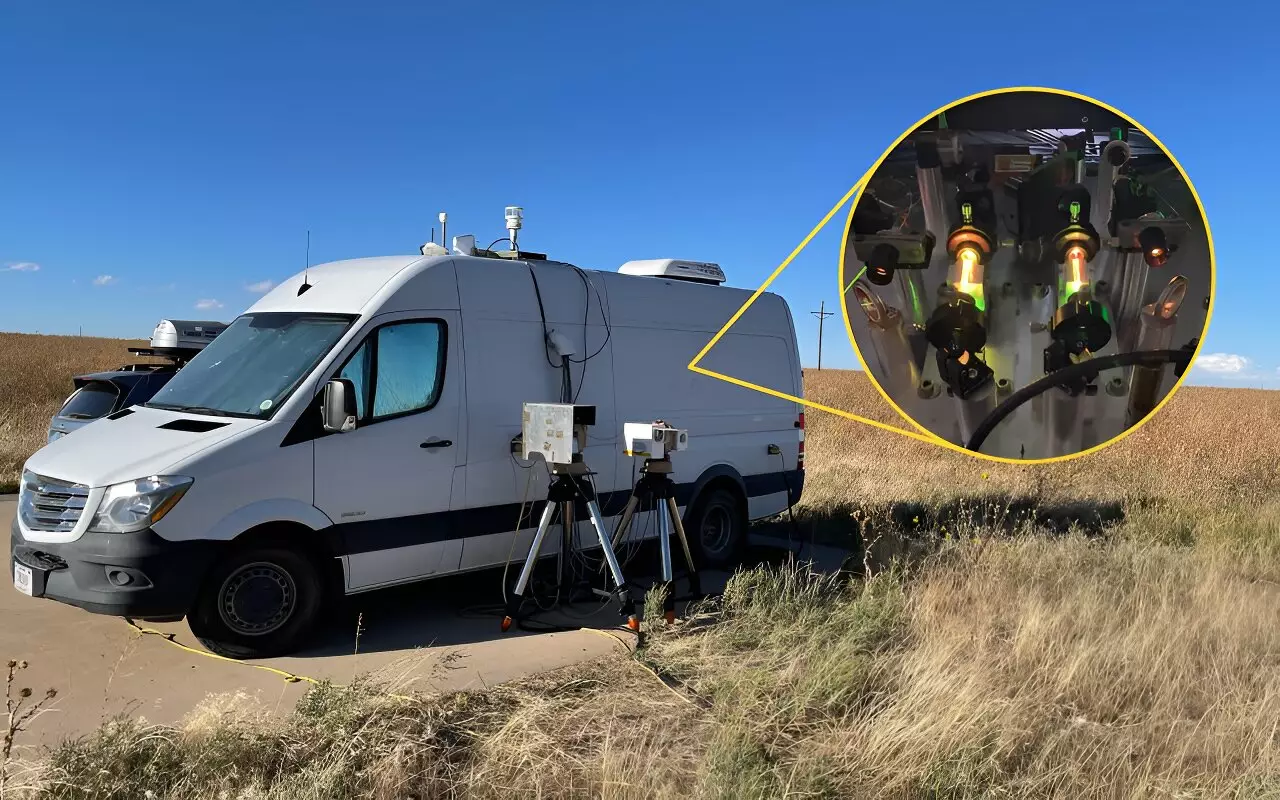The National Institute of Standards and Technology (NIST) has made significant advancements in their technology to monitor methane emissions and trace gases. This upgraded technology has the ability to accurately measure emissions even in harsh field conditions. The monitoring and identification of methane sources are crucial steps in reducing emissions, which aligns with the objectives of the Global Methane Pledge signed by over 150 nations at the 2023 United Nations Climate Change Conference. A recent study published in the Geophysical Research Letters details the work conducted by the NIST research team in estimating methane emissions in a large area of Northern Colorado over a two-month period.
The study focused on measuring emissions from two primary sources, namely agriculture and oil and gas production. The researchers discovered two unexpected findings. Firstly, methane emissions from concentrated animal feeding operations (CAFOs) were found to be greater than previously predicted. This highlights the need for better monitoring and regulations in the agricultural sector. Secondly, the total emissions from oil and gas production in the study area seemed to have plateaued in recent years, despite an increase in production. Such findings emphasize the importance of collecting accurate data to track emission trends and adjust regulations accordingly.
Measuring methane emissions presents numerous technical challenges. Traditional methods rely on economic activity as a basis for estimation. For instance, emissions from a CAFO are typically calculated by multiplying the number of animals present by an estimate of each animal’s methane emissions. In contrast, the NIST method directly measures the variation of methane and other gases in the atmosphere. This is achieved through the use of frequency combs, lasers with a broad spectrum of colors, to measure gas concentrations along a designated path in the air. Specific wavelengths of light are absorbed by methane and other gases, allowing for the precise determination of their concentration and the identification of emission sources.
The NIST upgrade to their emissions-monitoring technology improves its robustness, portability, and adaptability to diverse climates. Previous versions of the frequency comb spectrometer faced limitations and downtime in operation. The latest version, however, demonstrated resilience in harsh conditions, even in extreme weather such as winter in Colorado. This technological improvement enables more reliable and accurate data collection in challenging field conditions.
The use of frequency combs built from fiber lasers, widely available in the telecommunications industry, means that the upgraded technology can potentially be replicated by other laboratories and companies nationwide. The new system not only measures methane but also other important gases such as ethane and ammonia. This simultaneous measurement and analysis of multiple gases allow for a comprehensive understanding of emissions from different sectors, including agriculture and oil and gas production. Moving forward, researchers plan to further refine the system’s sensitivity and precision and expand the research area. There are plans to conduct studies near Salt Lake City in the coming years, which will provide regional variations in emissions data.
As the global community focuses on reducing methane emissions, advancements in emissions-monitoring technology, such as the NIST system, play a vital role in providing accurate and actionable data. This technology could have significant implications for scientists, industry leaders, and policymakers by offering insights into the sources and impacts of these pollutants. By effectively managing methane emissions, the risks of climate change can be reduced. Methane has a much higher global warming potential than carbon dioxide, making it an important target for emissions reduction efforts.
The NIST research team has made important advancements in the monitoring of methane emissions and other trace gases. By upgrading their emissions-monitoring technology, they have overcome previous limitations and demonstrated the robustness and reliability of their system even in harsh field conditions. The study conducted in Northern Colorado highlighted the need for accurate emissions data to track trends and adjust regulations. As the focus on reducing methane emissions intensifies, these advancements in technology will contribute to achieving accurate and actionable information for addressing climate change.


Leave a Reply